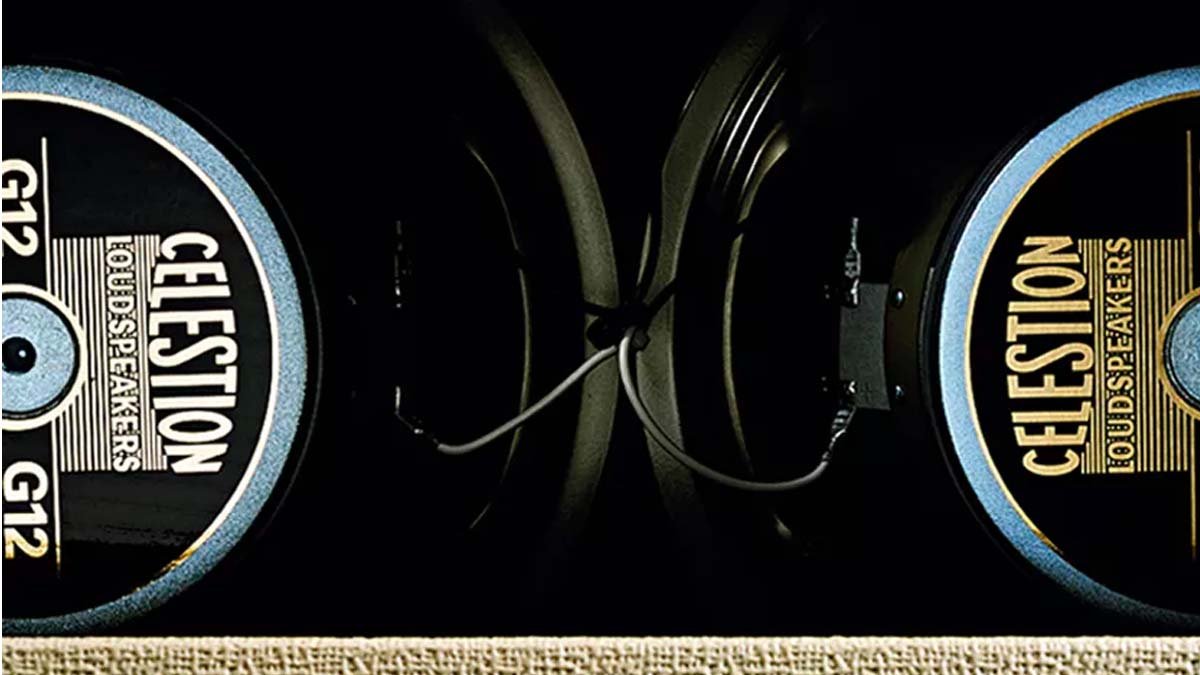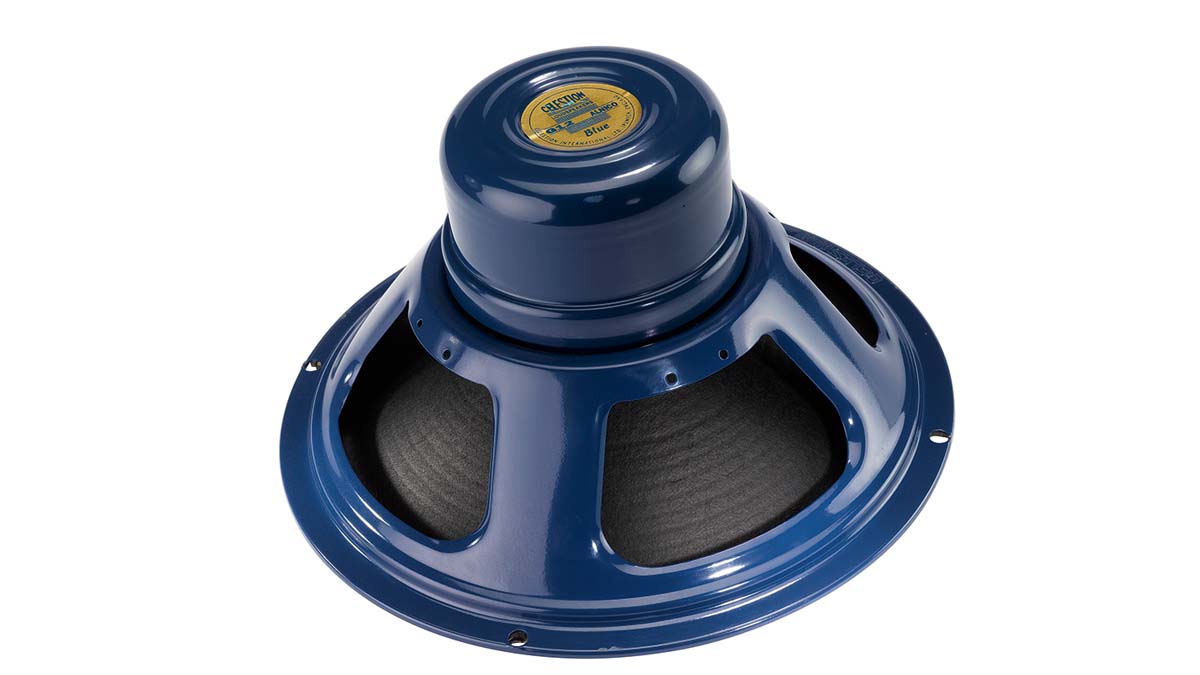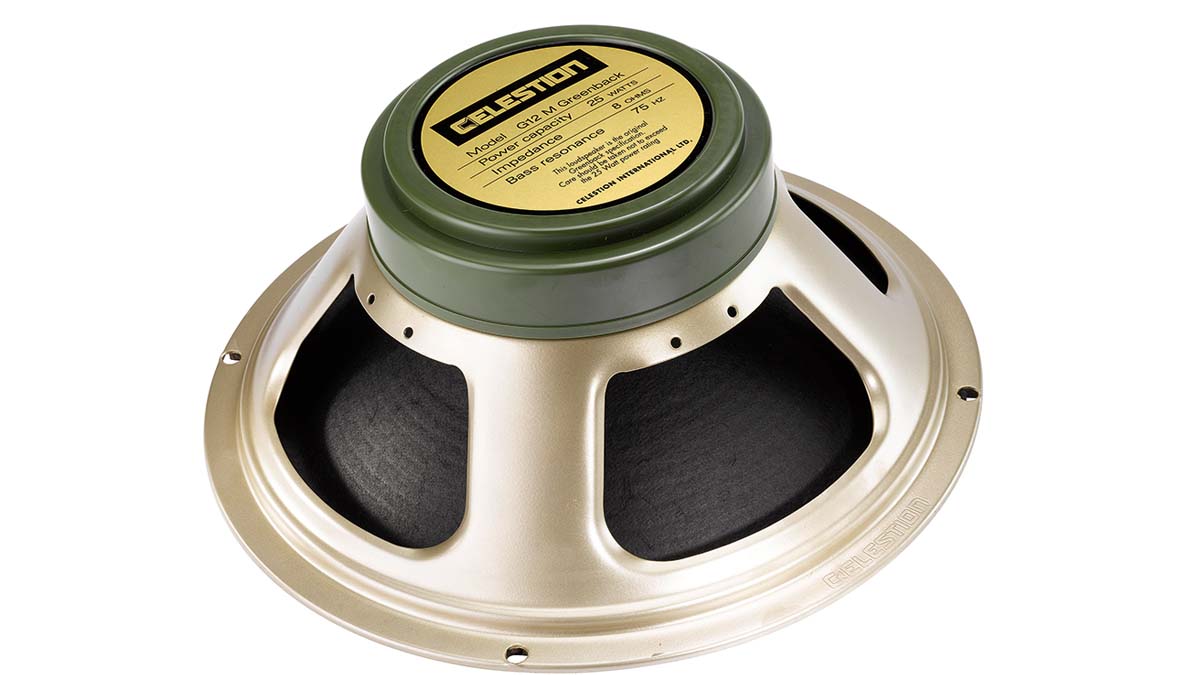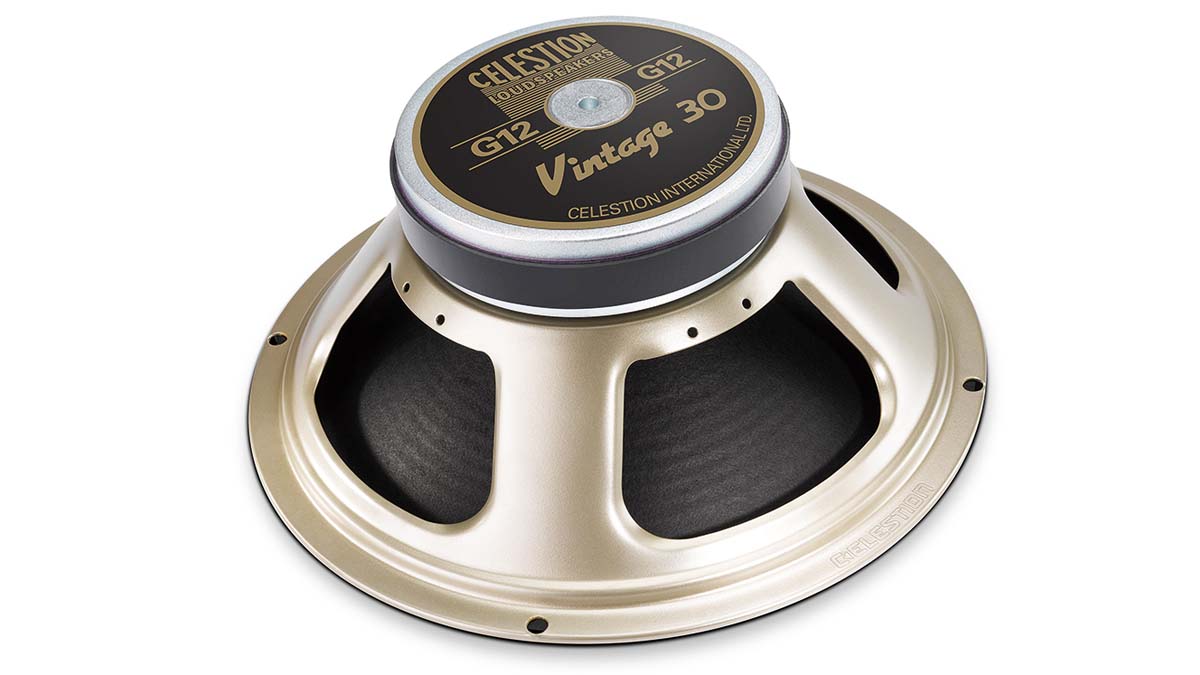Celestion guitar amp speakers explained
Tone pro John Paice gives us the lowdown on Celestion’s expanded range of industry standard-setting 12-inch guitar loudspeakers

“When you’re looking at choosing a speaker, the first spec you need to consider is impedance,” says John. “Every amplifier has an output impedance, and the idea is to match that with the speaker(s). Power rating is the other important thing to be aware of.
“You need a power rating that is equal to or greater than the max output of the amplifier. In essence, changing a speaker is quite simple; in most cases it’s a straightforward thing to do. Some amps are trickier than others, but it’s normally a 10-minute job for an experienced tech.
“There is a big movement towards mixing speakers. If, for example, you have a 2x12 unit, you can pick and choose some interesting sounds. It is a nice thing to experiment with and can really broaden your range of tone.
A G12M Greenback and a Vintage 30 is a popular combination because they’re dissimilar. Putting them together is nice to listen to
“I tend to like blending speaker models that have noticeably different characteristics. Get it right and it can sound massive. A G12M Greenback and a Vintage 30 is a popular combination because they’re dissimilar. Putting them together is nice to listen to.
“You could also take say a bass-y, girth-y-sounding G12H-150 Redback and pair it with something more treble-y like a Vintage 30 for some extra depth and contrast.”
1. Celestion Blue

“The company has been around since 1924, so we’re coming up to our 100th anniversary! We were one of the early developers of moving coil loudspeakers and in the early days we focused on radios and gramophones.
“In the late 1950s, we had a good relationship with Vox, and we set about developing one of our radiogram speakers – the G12 – to give it more power-handling capability for guitar amps. That speaker was put into [Vox’s first dedicated electric guitar amplifier] the AC15 in the late 50s.
Get The Pick Newsletter
All the latest guitar news, interviews, lessons, reviews, deals and more, direct to your inbox!
“Fast-forward to the early 60s and that became the ‘Vox blue’ [model T.530] – the original purpose-built guitar speaker. Alnico became affordable again in the 90s and the Celestion Blue is a recreation of the original ‘Vox blue’. George Harrison and Brian May used it in their Vox amps and people love those sounds. It has a certain chime and a kind of gritty jangle.”
2. G12M Greenback

“Marshall came along in 1962 and we started making an Alnico speaker similar to the ‘Vox blue’ for them called the T.652. Because of various geopolitical issues around the time, Alnico suddenly became very expensive, therefore we started using iron-based/ceramic magnets, and that’s how the G12M and G12H came about.
“Alnico has a more laid-back, softer feel, whereas ceramic speakers tend to be a little punchier and more aggressive sounding – which was perfectly in tune with how rock music was progressing in the 60s.
“The G12M is iconic and very much of its era. Clapton, Page, Beck and Hendrix all used them. Later on, Van Halen and Angus Young used them, too. Up until the early 70s, the G12M and G12H were about all the choice you had! The key difference between them is the magnet – M being Medium/35 ounces and H being Heavy/50oz. The bigger magnet produces a tighter low-end.”
3. Vintage 30

“There’s a logic to the way Celestion speakers have evolved – it comes down to power handling. As amplifiers became more powerful, we had to build speakers that would take more power.
“After the 15-watt ‘Vox blue’, 25-watt G12M greenback, and 30-watt G12H greenback, the Vintage 30 was developed in the mid-80s to work with the hot-rodded amps of the time. The original idea behind it was to go back to the tonal benchmark of the ‘Vox blue’ and replicate that as closely as possible, but with a ceramic magnet speaker.
“Although the name implies 30 watts, it’s actually a 60-watt speaker; we think the name comes from its 30cm diameter. The Vintage 30 is versatile and virtually bulletproof and has been adopted as an industry standard for rock and metal. It’s famously used by Slash and Peter Frampton, although producers love it, too, because it tends to record well.”
4. G12H-150 Redback

“Most of our speakers follow specific recipe, and with a 12-inch cone that means a 1 3/4-inch voice coil – that’s the ‘house sound’. But that does impose certain limitations in terms of power handling. Aside from needing to use more robust materials, more powerful speakers also need to deal with heat. Power and heat are inextricably linked, and when you up the power there comes a point when you need to reconfigure the system.
“Whereas the previous three speakers all have 1 ¾-inch voice coils, the G12H-150 Redback has a larger two-inch voice coil combined with a 50oz (H/Heavy) magnet. Along with its more robust materials, that enables us to up the power rating to 150 watts. Changing the voice coil – and, therefore, its relationship with the cone – changes the speaker’s tonal signature. Consequently, these speakers have a darker, meatier sound, which is great for down-tuning or taming a super-bright amp.”
Rod Brakes is a music journalist with an expertise in guitars. Having spent many years at the coalface as a guitar dealer and tech, Rod's more recent work as a writer covering artists, industry pros and gear includes contributions for leading publications and websites such as Guitarist, Total Guitar, Guitar World, Guitar Player and MusicRadar in addition to specialist music books, blogs and social media. He is also a lifelong musician.








![John Mayer and Bob Weir [left] of Dead & Company photographed against a grey background. Mayer wears a blue overshirt and has his signature Silver Sky on his shoulder. Weir wears grey and a bolo tie.](https://cdn.mos.cms.futurecdn.net/C6niSAybzVCHoYcpJ8ZZgE.jpg)

![A black-and-white action shot of Sergeant Thunderhoof perform live: [from left] Mark Sayer, Dan Flitcroft, Jim Camp and Josh Gallop](https://cdn.mos.cms.futurecdn.net/am3UhJbsxAE239XRRZ8zC8.jpg)
